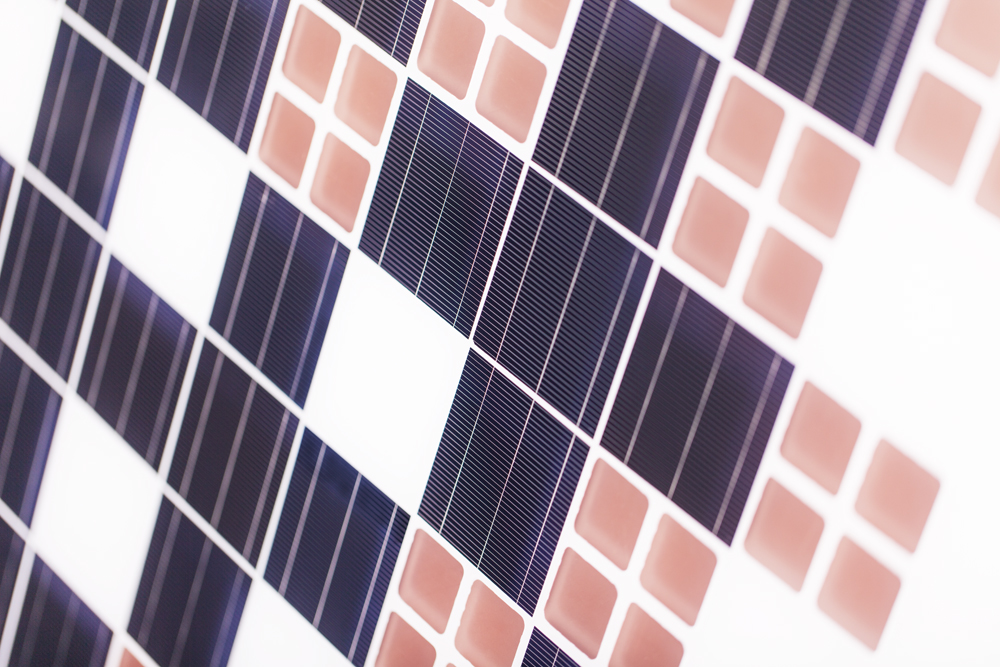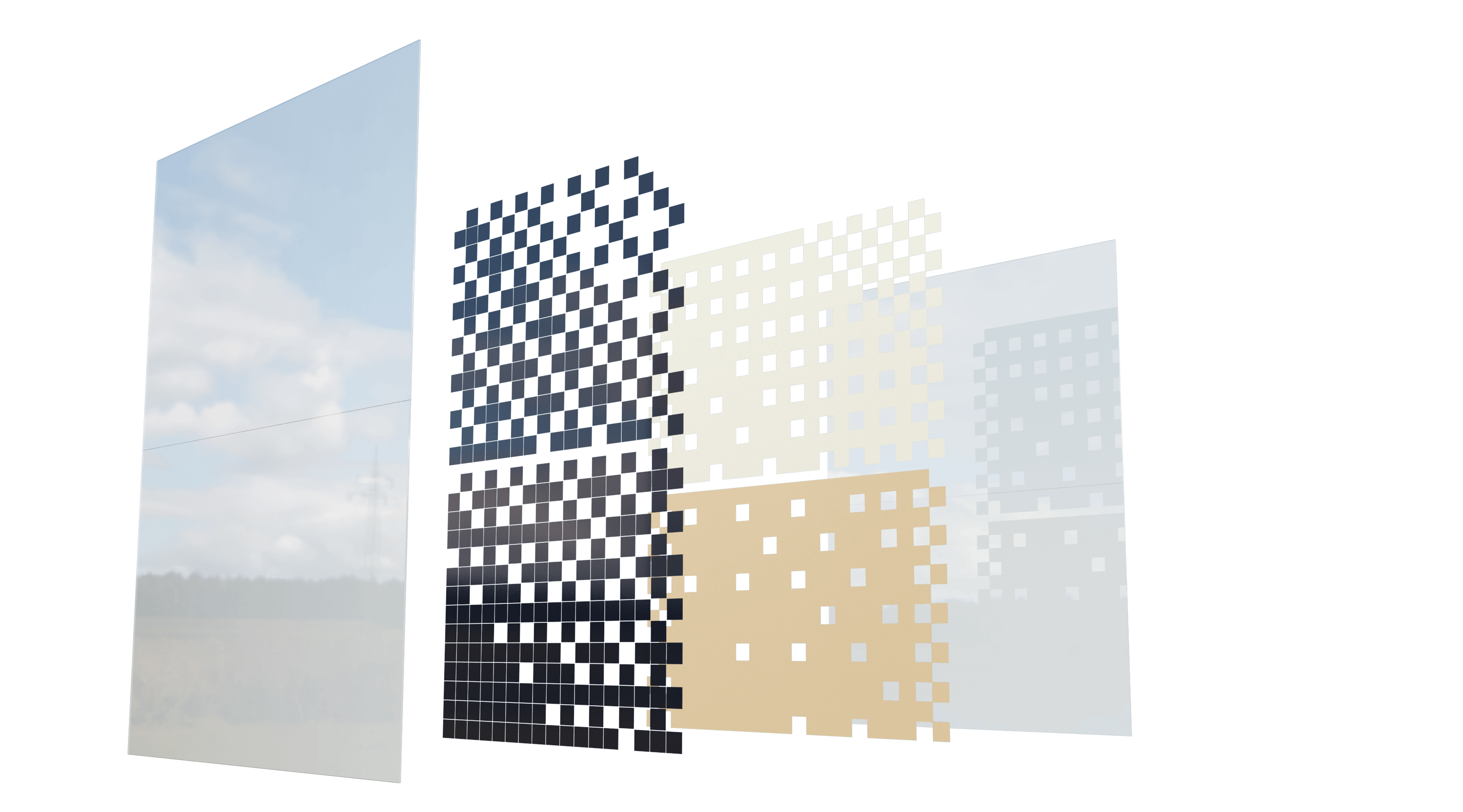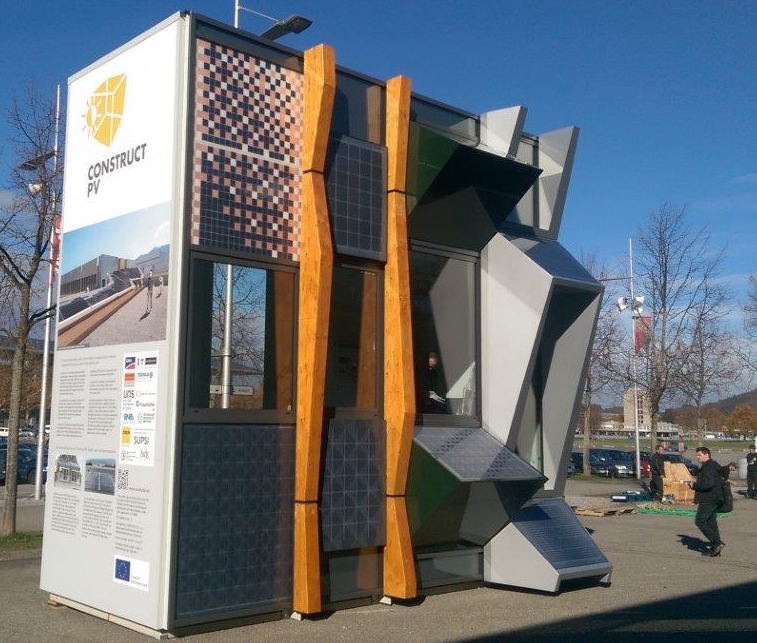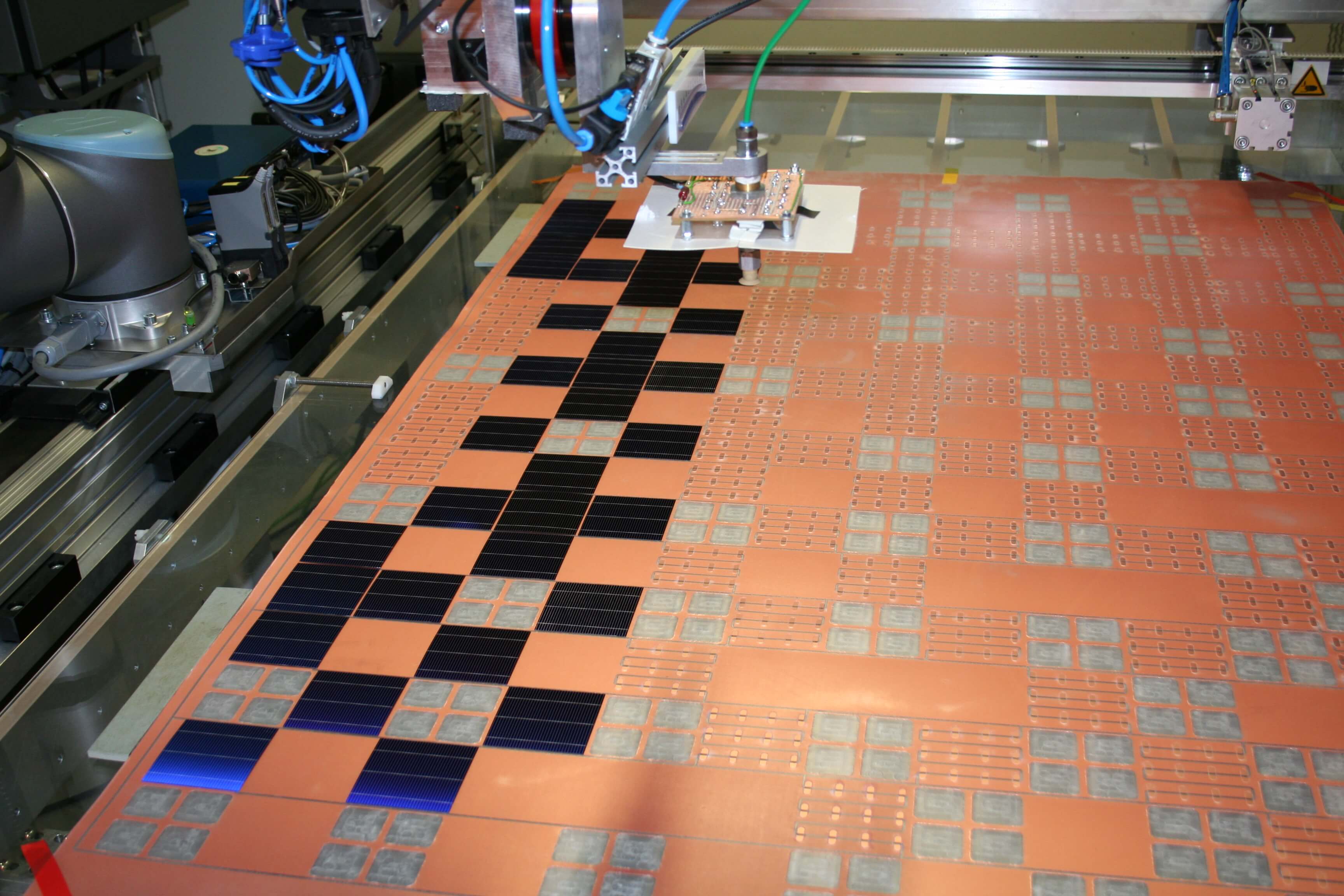| Duration: | February 2013 - January 2018 |
| Contracting Authority/ Sponsors: | European Commission, FP7, Contract No. 295981 |
| Project Partners: | Ed. Züblin AG, Technical University Dresden, SMA Solar Technology AG, Tegola Canadese S.p.A. (Italy), D'Appolonia S.p.A. (Italy), ENEA (Italy), UNStudio (Netherlands), Meyer Burger (Switzerland), Scuola Universitaria Professionale della Svizzera Italiana SUPSI (Switzerland), National Technical University of Athens (Greece), Advanced Management Solutions AMS Ltd. (Greece) |
| Website: | www.constructpv.eu |
| Project Focus: |
Construct PV – Mosaic Modules as Photovoltaic Design Elements for Solar Facades



PV modules for building integration (BIPV) are developed and tested in pilot applications in the “Construct-PV” EU project. The project focuses on BIPV applications in the opaque area of the building envelope. The developments focus on high yield, appealing aesthetics, and low costs. Particular attention is paid to the amortization of the additional investment costs [€/m2] that are incurred due to the integration of the “solar power generation” function into the building envelope. One of the new developments of the project is the concept of the mosaic module, which enables new degrees of freedom for the overall design of the facade and can be produced using existing system technology.
Conventional PV modules often do not meet the architectural requirements of facade aesthetics. The size and format of crystalline silicon solar cells and their formwork-related grid-like arrangement in the module restrict the design freedom. The newly developed concept of the mosaic module allows the arrangement of highly efficient back-contact solar cells in almost any shape and size within individual modules for an overall visual appearance of the facade. Design freedom results from the multi-layer module structure with respective design options for every module layer. By partial population of the module area, modules in opaque and semitransparent variants as well as glass-film or glass-glass designs can be produced.
Prototypes of the new module were produced at ModuleTec of Fraunhofer ISE. All-purpose metal-wrap-through solar cells (AP-MWT) are used in the demo modules. For example, the AP-MWT cell concept developed at Fraunhofer ISE is used in device-integrated PV or in low-concentrating receivers. Here, approx. 80 single cells are processed on a wager, which can be separated into single sub-format of the 156 mm x 156 mm cell format. Interconnection is realized by a structured copper coated backsheet which is available as commercial product (e.g., for MWT modules). No stringers are required for module production, as the module ismanufactured by pick-and placing the solar cells.
Additional contacts: Alma Spribille, Dr. Tilmann Kuhn
